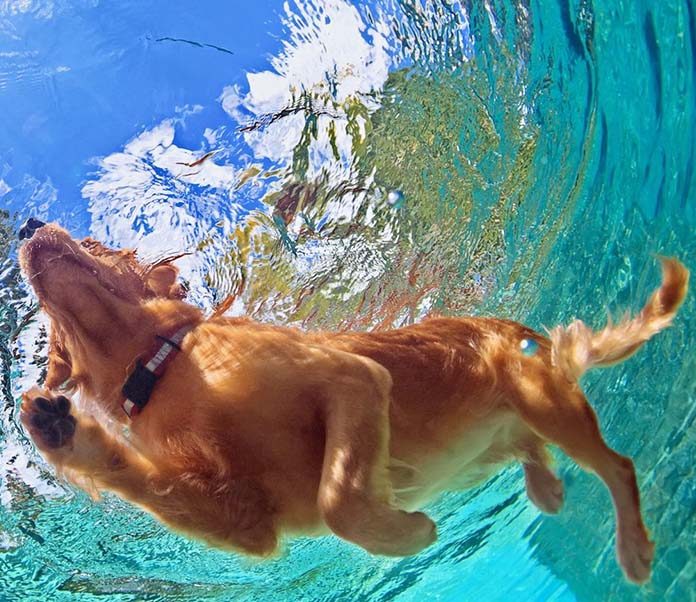Going swimming or doing other water activities with your dog is a great way to enjoy summer. Following a few helpful safety tips can help you keep your dog happy and safe in the water.
Summer is a great time to be outside enjoying nature with family, friends and pets. And what’s more refreshing on a hot summer day than enjoying a dip in the water to cool off? If you’re thinking about taking your pup along with you on water adventures, check out these helpful tips for introducing your dog to water, plus dog pool safety tips for swimming with your dog.
Do Dogs Like Water?
Yes, and it Can Be Great Exercise
Many dogs enjoy water. Just like humans enjoy cooling off in a pool or lake, dogs can find water refreshing. In fact, swimming is great exercise for dogs, especially older dogs or those with joint issues or heart conditions. Swimming provides a full body workout with low impact on joints. Be sure to check with your veterinarian before beginning an exercise regimen with your older or ailment-prone pup to make sure their bodies can handle the movement and exertion.
No, Not All Dogs Like Water
However, if your dog does not like bodies of water, do not to force your dog into the swimming pool. While your dog may be unsure of water the first time you introduce them to it, enduring signs of anxiety, stress or discomfort is your dog’s way of telling you they would prefer to stay dry. In these situations, it’s best to respect your dog’s wishes. The last thing you want is for your dog to panic when you’re out on the water.
Some Dogs Aren’t Born to Swim
Keep in mind that some dog breeds are not natural swimmers. Dogs with heavy chests and short muzzles, such as bulldogs or pugs, will likely have trouble paddling and staying afloat. Small breed dogs, dogs with short legs and long bodies, and dogs with double coats all may also have trouble swimming because of their physical build.
How to Teach Your Dog to Swim
When teaching your dog to swim for the first time, it’s important to start slow and easy. Take your dog to the shallow end of a walk-in pool or the edge of a lake or river. Let your dog get used to the feel of the water. You can walk out into a bit deeper water and gently coax your dog to come to you (toys may help). Support your dog as they start paddling and stay close in case they need assistance.
Continue to ease your dog into the idea of swimming with additional shallow-water sessions. You can increase the length of time you swim with your dog and test deeper water as they get more comfortable. Be sure to take it at your dog’s pace and never push them farther or faster than they’re ready to go.
Dog Swimming Safety Tips
Get a Doggie Life Jacket
It’s a good idea to have a properly fitted personal flotation device (PFD) or life jacket, for your dog. This can help your dog feel more comfortable in the water and help keep them safe if they are not a strong swimmer. Dogs should wear life jackets while boating, canoeing, kayaking or doing other activities in deep water. It can help your dog stay afloat if an accident occurs and they are thrown into deep water far from shore.
Stay Safe at the Pool
When swimming in a pool, make sure your dog doesn’t get into any chemicals or treatment supplies. Try to keep your dog from drinking pool water, as it can upset their stomach. Also make sure your dog knows how to get out of the pool on their own.
Stay Safe at the Beach
It’s important to keep a close watch on your dog while at the beach, even if they’re a strong swimmer. Undertows and rip currents can increase the risk of drowning. Make sure to stay close to your dog in water and don’t go out too far. Hot sand can also hurt your dog’s paws. Keep your dog’s paws safe out of the water by applying a paw-pad balm before and after beach time or by outfitting your dog with protective booties.
Check for Ticks
Lakes, ponds and other bodies of standing water can be a breeding ground for ticks and other parasites. Ask your veterinarian about topical treatment you can apply ahead of time to keep your dog protected from parasites and the diseases they carry. Be sure to check your dog for fleas, ticks and other unwanted pests after spending time in or around water.
Remember to Bring Drinking Water
If you’re at the beach with your dog, on a boat or other excursion where fresh drinking water is not readily available, remember to bring a few water bottles along for your dog, as well as a water bowl they can drink from. As a good rule of thumb, if you’re bringing water for yourself, you should also bring it for your pup.
Don’t Forget Sunscreen
Dogs, like humans, can get sunburned without the proper protection. Be sure to apply a dog-safe sunscreen before and after your dog goes in the water.
Spending time in the water with your dog can be a great way to bond and exercise this summer. Whether you choose to boat, swim, kayak, canoe or fish, keep these swimming safety tips for dogs in mind to help make sure everyone has a good time and stays safe!
| Picture | Name | Price | Description |
 |
Chuckit! Ultra Ball | $4.49 | More |
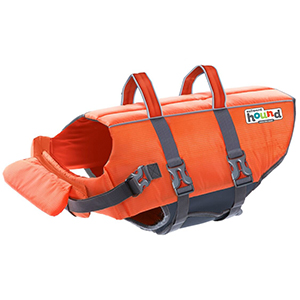 |
Outward Hound Granby Splash Dog Life Jacket | More | |
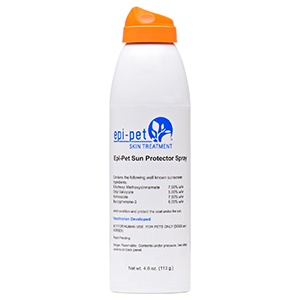 |
Epi-Pet Sun Protector Spray for Pets | More | |
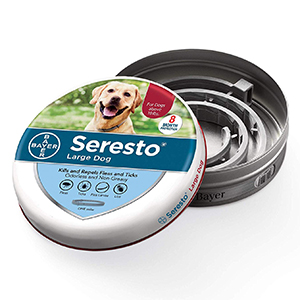 |
Bayer Animal Health Seresto Flea and Tick Collar for Large Dogs | $57.99 | More |
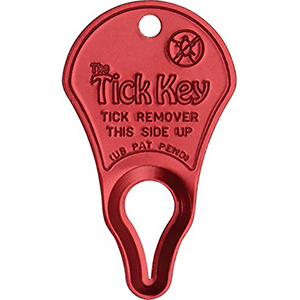 |
The Tick Key | $7.47 | More |
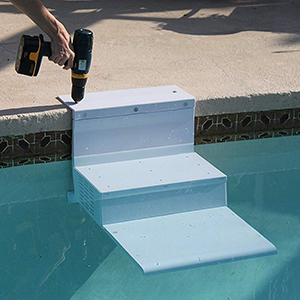 |
Paws Aboard PoolPup Steps | $150.99 | More |
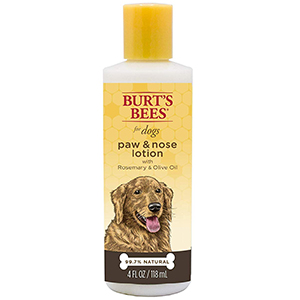 |
Burt’s Bees All-Natural Skin Soothing Grooming Solutions for Dogs | $2.85 | More |














